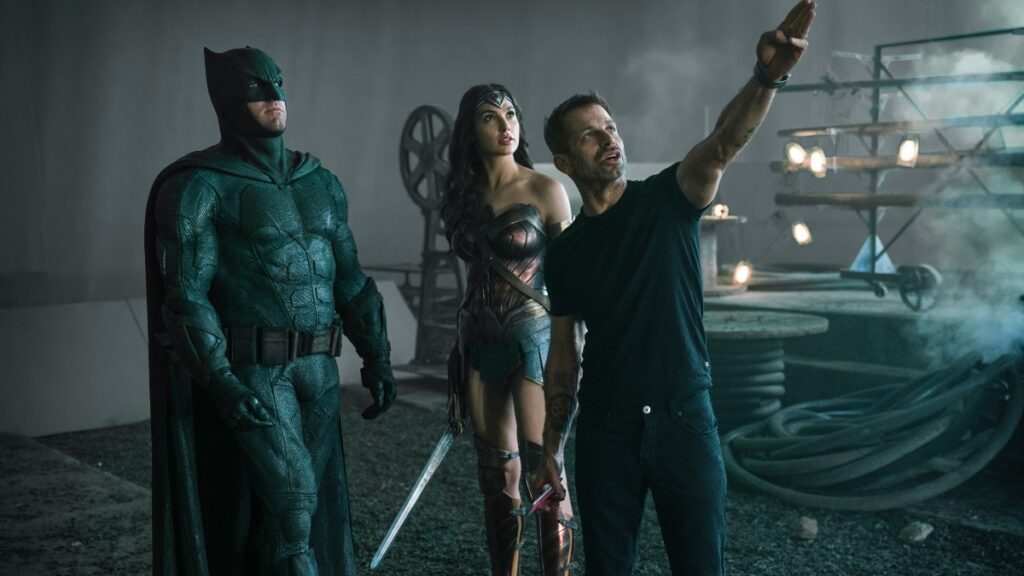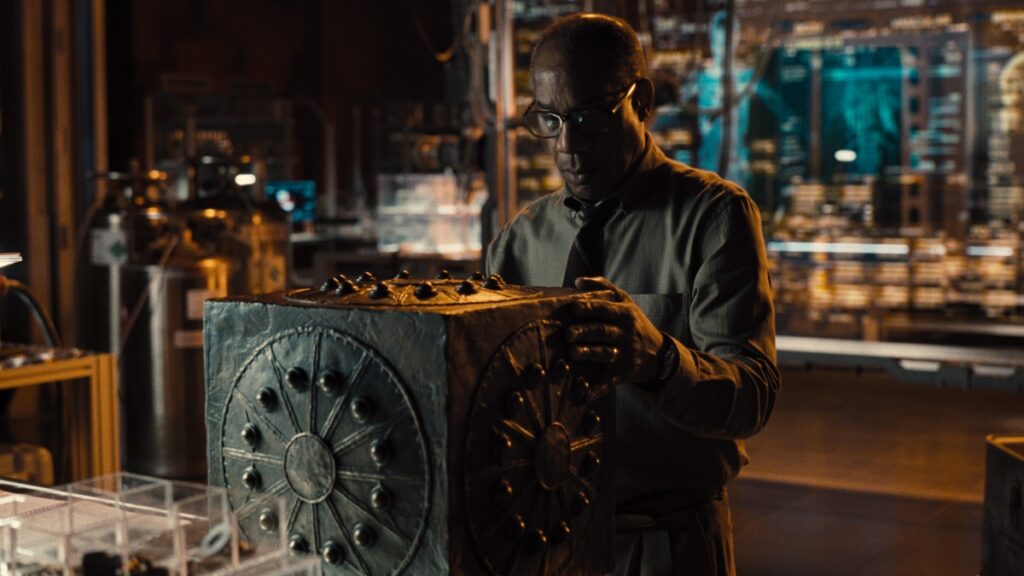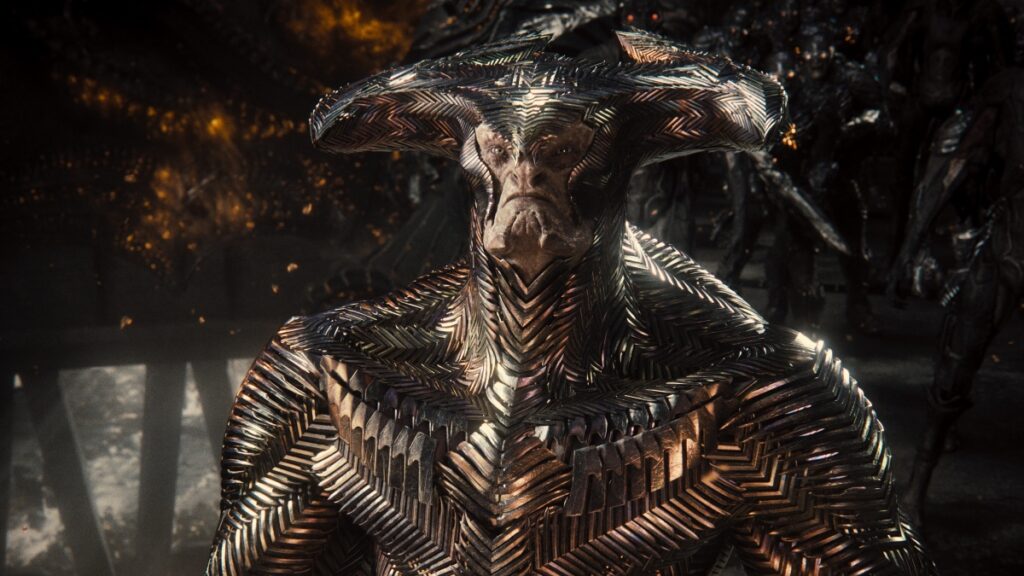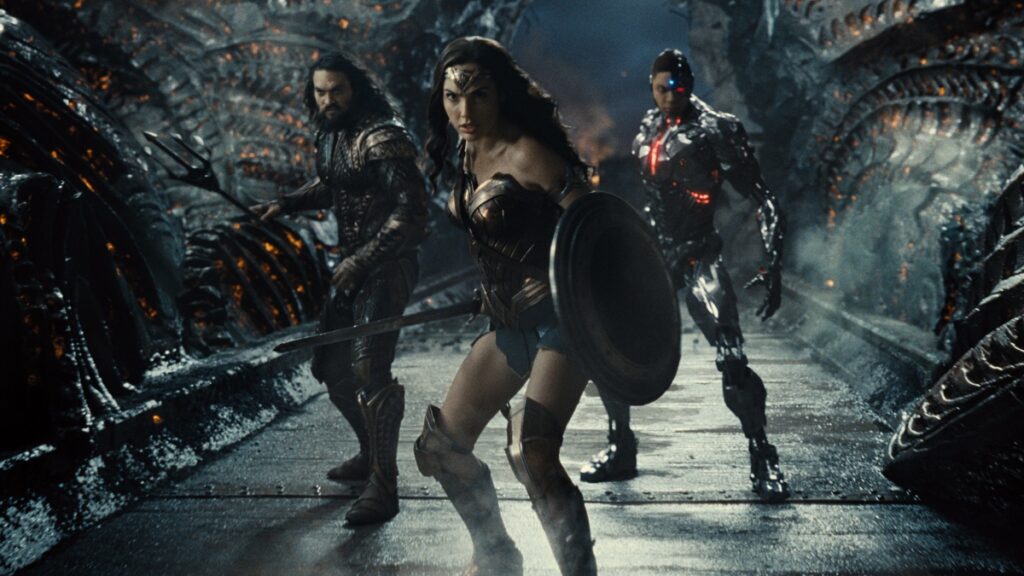
We’ve all heard the stories of filmmakers who weren’t able to make the movie they set out to make for one reason or another. Most of us have probably also thrown in a DVD or Blu-ray of some “Director’s Cut” or another, where a director was allowed to cut together their own ultimate version of a film that skirts around studio and financier notes, as well as MPA ratings boards.
Zack Snyder’s Justice League (or ZSJL, for the sake of my sanity) allows the director of Man of Steel and Batman v Superman: Dawn of Justice to complete his trilogy. In fact, Snyder’s Justice League was meant to be a two-parter, but somewhere along the way, that idea was nixed and due to a personal family tragedy, Snyder wasn’t able to do reshoots and finish the movie in time for its November 2017 release date. (There’s a great book by my pal Sean O’Connell called Release the Snyder Cut, which tells the full story, so I won’t go into it here.)
But that brings us to a four-hour epic that not only fills in lots of necessary blanks that left many scratching their head after watching the 2017 release but also offers so much promise for what was to come that may or may not ever happen. ZSJL is a movie in six parts with an epilogue, and you definitely might wonder if there was an option to just re-release it as a mini-series similar to what Quentin Tarantino did with The Hateful Eight a few years back that probably wouldn’t make much of a difference, as whether you view it all in one sitting or in increments, the results should generally be the same.

There’s very little point spending too much time or space going through the movie scene-by-scene in comparison with the version of the movie finished by director Joss Whedon (Marvel’s The Avengers). Story-wise, it’s generally the same movie, but again, with more clarity on what we’re watching, and otherwise, it’s like night and day. This is not just because Snyder’s cut is twice as long, though in many ways, that extra time does give the entire movie more room to breathe, which helps everything from the characterizations to the expanded action scenes.
There’s a lot of great stuff, including an actual origin for Ray Fisher’s Cyborg and more between him and Joe Morton as his father Dr. Silas Stone – important emotional territory that makes up the very heart and core of the story and was cruelly brushed aside and ignored for the theatrical release. There’s a great introductory scene to the Flash’s powers, involving Kiersey Clemons’ Iris Allen – also sadly excised from the theatrical release. Although Ezra Miller’s constant clowning around and quips do get a little tiresome, at least the character pays off in the epic final battle, as he should, being that the Flash is a major DC superhero. Similarly, there’s much more of the stuff we enjoyed from Jason Momoa’s Aquaman in his own movie, and there’s just so much more with the Amazons than the most recent Wonder Woman. Most importantly of all, the main villain Steppenwolf, voiced by Ciaran Hinds, is far more menacing and dangerous, because he’s a lot less human than the 2017 version. This is a real God-like being from another universe that has no concerns for anything or anyone that gets in the way of him retrieving three Mother Boxes. This includes the lofty ideals of the heroes facing him, who he disposes one by one.

Technically, and like many well-made blockbusters, ZSJL is such a below-the-line crafts dream come true, because of course a director like Snyder would only be working with the best. To be fair, Snyder’s long-time Costume Designer Michael Wilkinson, Production Designer Patrick Tatopoulos and Cinematographer Fabian Wagner had done most of their work during the original first leg of production. Whatever happened after Snyder stepped away, most of what he was trying to achieve was clearly there, captured on “film” (or digital, if that might be the case.)
Because of that, the “Snyder Cut” feels like a significant achievement in post-production, because that’s where the most work had to be done. Some might snicker at the thought of the editing in a four-hour epic being better than a film half its size, but indeed, Snyder knows how to work with his editors to cut action.
What’s odd is that the same editors from the 2017 movie are credited for this new version, although one expects Snyder worked more with David Brenner, who edited Batman v Superman, and the other two credited editors, Richard Pearson and Martin Walsh, were presumably brought in later and stayed on to work with Whedon. All three of them are mentioned in the press notes, but then there’s also one Dody Dorn who is not mentioned in the press notes but listed on IMDB. Only Snyder would know how much additional editing was needed when ZSJL was greenlit last year, but considering that only one new scene was shot, one wonders whether some iteration of an actual four-hour cut existed before Whedon came on board or more work was required.
Most important, Snyder knows what’s cool, which is why none of the action scenes are marred by corny jokes, and there are real stakes and tensions in every single one of the battles, all elevated to a point that makes one realize that whomever finished the theatrical release was just trying to include only what was needed in terms of information.
The biggest and most noticeable difference is that gone is the score by Danny Elfman, which you might be surprised to learn sounds fairly stock and generic in hindsight. Instead, Snyder works with Thomas Hokenborg aka Junkie XL from Mad Max: Fury Road that gives the movie the much-needed metal energy to make sure the film’s multiple action set pieces leave you quite breathless.
It’s obvious that whatever was added in the Whedon reshoots did little to help the movie Snyder set out to make, but rather, added things that muddled and distracted from the filmmaker’s original intentions. Either way, people are going to be studying these two versions of the movie for years, as it’s a textbook case of “too many cooks” vs. one clear and distinct vision.
There isn’t one minute of wasted time in ZSJL’s four-hour run time, and the results are absolutely epic. In other words, someone at Warner Bros. effed up — this is the movie that should have been released in theaters even if it meant waiting three extra years.
Zack Snyder’s Justice League will stream on HBO Max starting on March 18. All images courtesy HBO Max/Warner Bros.






